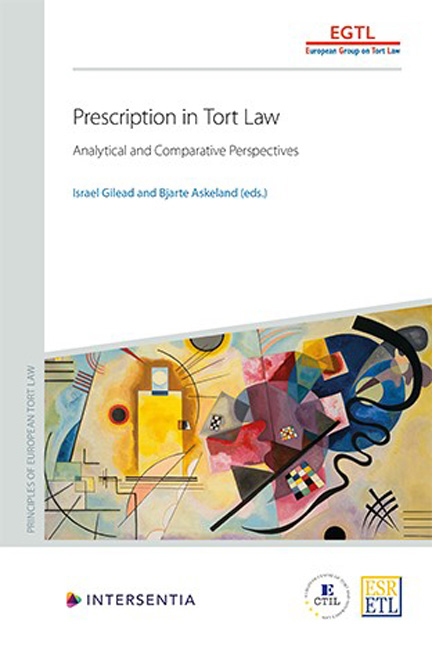Book contents
- Frontmatter
- Dedication
- Acknowledgements
- Contents
- List of Authors
- PART I THEORETICAL AND COMPARATIVE ANALYSES
- Analytical and Comparative Report
- Economic Analysis
- PART II PRESCRIPTION IN TORT LAW OUTLINED
- Case Scenarios
- Austria
- Belgium
- Czech Republic
- England and Wales
- France
- Germany
- Greece
- Italy
- The Netherlands
- Norway
- Poland
- South Africa
- Spain
- Switzerland
- United States
- European Union
- Appendix: Questionnaire
- About the Editors
South Africa
Published online by Cambridge University Press: 22 December 2020
- Frontmatter
- Dedication
- Acknowledgements
- Contents
- List of Authors
- PART I THEORETICAL AND COMPARATIVE ANALYSES
- Analytical and Comparative Report
- Economic Analysis
- PART II PRESCRIPTION IN TORT LAW OUTLINED
- Case Scenarios
- Austria
- Belgium
- Czech Republic
- England and Wales
- France
- Germany
- Greece
- Italy
- The Netherlands
- Norway
- Poland
- South Africa
- Spain
- Switzerland
- United States
- European Union
- Appendix: Questionnaire
- About the Editors
Summary
INTRODUCTION
The aim of this report is to explore how (and why) the passage of time on an alleged tort law claim affects (and should affect) the claim, the parties (P the plaintiff and D the defendant) and other parties through the defence of prescription. Extinctive prescription in South African tort law is presently regulated by the Prescription Act 68 of 1969. The purpose of the Act was to consolidate and amend the laws relating to prescription, and to replace its predecessor, the Prescription Act 18 of 1943. However, the new Act applies only to debts arising after the commencement of the Act (that is, 1 December 1970); debts that arose before that date continue to be regulated by old law. When the Act does not make provision on a point, reference must be made to our Roman-Dutch common law. The major literature on prescription is stated infra fn 1 and 2.
DEFINITION OF PRESCRIPTION
Prescription in tort law is a legal institution that prevents P from enforcing an alleged right against D because of the running of a specified period of time on the tort claim. This definition is acceptable for South African law except for the fact that the Prescription Act 68 of 1969, on which South African law of extinctive prescription is generally based, uses the term debt instead of right. In the context of the law of delict (tort) the concept of debt refers to the obligation to pay damages for the damage caused by a delict. If the debt cannot be enforced or is extinguished as a result of prescription, naturally the fate of the right or remedy to claim the damages will also be sealed.
THE NATURE OF PRESCRIPTION AND ITS EFFECTS
There are different ways by which prescription prevents P from enforcing an alleged right of remedy or debt against D. Its effect may be: (a) to extinguish P's right to remedy; (b) to provide D with a substantive defence that prevents P from enforcing the right to remedy although it is not extinguished; (c) to provide D with a procedural defence that bars P's ability to litigate the right in courts.
- Type
- Chapter
- Information
- Prescription in Tort LawAnalytical and Comparative Perspectives, pp. 549 - 578Publisher: IntersentiaPrint publication year: 2020

